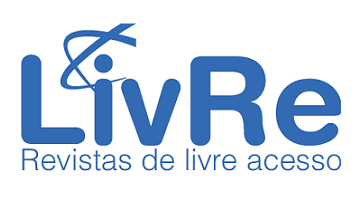DESENVOLVIMENTO DE UM ROBÔ MÓVEL CONTROLADO POR ARDUINO NA CULTURA MAKER
DOI:
https://doi.org/10.52138/citec.v16i1.406Keywords:
arduino; controle; ESP32; programação, robóticaAbstract
This article aims to present a project for developing a robotic cart. Robotics has proven to be a highly versatile tool due to its multidisciplinary nature, becoming increasingly common in various fields, handling diverse equipment. Despite its prominent role in industries, where it operates on factory floors to streamline production activities, robotics remains a focus of extensive research to enhance its effectiveness further. In academic settings, robotics facilitates the transition from theory to practice, allowing students to engage in the
construction of manipulator or mobile robots, as is the case with this research. Accordingly, a prototype mobile robot was built in a learning environment using readily available components and the Arduino Integrated Development Environment (IDE). The vehicle was equipped with motors, sensors, and an ESP32 microcontroller enabling effective programming and control of the cart. The system was designed to demonstrate the integration of hardware and software in robotic applications, providing a versatile and cost-effective platform for robotics learning and experimentation. The results indicate the feasibility and ease of programming mobile robots using the ESP32 platform and Arduino IDE, leveraging the availability of low-cost hardware to apply and enhance robotics skills.
Downloads
References
ARDUINO. 2024. O que é arduíno. Disponível em: https://www.arduino.cc. Acesso em: 12 out. 2023.
ESPRESSIF. ESP32: A diferente IoT and Power Performance. 2018. Disponível em
https://www.espressif.com/en/products/hardware/esp32/overview. Acesso em: 26 jun. 2024.
MAGRIN, C.E.; RIBAS, I.C. L.; RIBAS, T. A.; VITOLA, M. S.; TREAQUIN, P.; SURDI, J. J.; MAGRIN, C. S.; TODT, E. Promovendo a aprendizagem da robótica nas escolas com metodologias ativas e o desenvolvimento de um robô móvel acessível para redução das desigualdades sociais. XIII Computer on the Beach. Itajaí, SC, Brasil. v. 13, 2022. Disponível em: https://periodicos.univali.br/index.php/acotb/article/view/18811. Acesso em: 10 out. 2024.
MIRANDA, L. A. V. Monitoramento de parâmetros ambientais de um leito hospitalar utilizando ESP32. Trabalho de Conclusão de Curso (Graduação em Engenharia Elétrica). Universidade do Estado do Amazonas, 2019. Disponível em: http://repositorioinstitucional.uea.edu.br/bitstream/riuea/3468/1/Monitoramento%20de%20par%C3%A2metros%20ambientais%20de%20um%20leito%20hospitalar%20utilizando%20ESP32.pdf. Acesso em: 28 jun. 2024.
NERI, H.G. F. Utilização da plataforma Arduino para controle de experimentos remotos de física. Trabalho de Conclusão de Curso. Universidade Federal de Uberlândia Instituto de Física. Campus Santa Mônica. Uberlândia, 2014. Disponível em: https://repositorio.ufu.br/bitstream/123456789/26520/1/UtilizacaoPlataformaArduino.pdf. Acesso em: 18 out. 2023.
RESNICK, M. Jardim de Infância para a Vida Toda: por uma aprendizagem criativa, mão na massa e relevante para todos. Tradução: Mariana Casetto Cruz e Lívia Rulli Sobral.Porto Alegre: Penso, 2020.
SATO, E. M.; SANTOS, L. A.; ALMEIDA, N. Hivebots: interação entre robôs para execução de tarefas. Curitiba: UTFPR, 2015. 15 p. Disponível em: https://repositorio.ufsc.br/bitstream/handle/123456789/200024/PFC%20Volnei%20Fontana%20Junior_2018-2.pdf?sequence=1&isAllowed=y. Acesso em: 19 out. 2023.
SILVA, M. P. DA.; BARBOSA, F. DA C. Matemática e Física em experiências de Robótica Livre: explorando o sensor ultrassônico. Texto Livre, v. 14, n. 3, p. e29629, 2021. Disponível em: https://www.scielo.br/j/tl/a/6kcn8mRzBtrpVM5F78kx6mD/?format=pdf. Acesso em: 18 out. 2023.
Downloads
Published
How to Cite
Issue
Section
License
Copyright (c) 2024 Ciência & Tecnologia

This work is licensed under a Creative Commons Attribution 4.0 International License.











